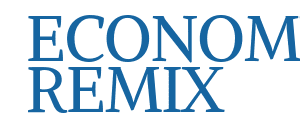
The 1960s Civil Rights era produced a cynical but prescient observation that continues to haunt US social policy: “There’s money to be made from poverty.”
Take the old example of Ross Perot: Before he was a presidential candidate, he made his fortune producing welfare forms for the federal government. Today, this dynamic has evolved into sophisticated disaster capitalism, where public benefit systems create ideal conditions for private equity extraction that devastate both vulnerable communities and nonprofits.
For instance, when Massachusetts revised Medicaid’s personal care attendant payment system, networks of disability advocacy organizations and community support groups found their operations disrupted. Similarly, when unemployment insurance systems crashed during COVID-19, nonprofits serving displaced workers were forced into crisis-management mode.
As states centralize and privatize assessment functions, community-based organizations face systematic displacement by profit-driven contractors who view vulnerable populations as markets to capture.
Technical Debt as the Gateway to Privatization
By “technical debt,” I mean government dependency on third-party, private firms for the maintenance, upgrades, and/or replacements of information technology systems.
Public systems are underfunded until they fail, private contractors are brought in as emergency measures [and] extract maximum value.
This has become a Trojan horse through which private equity penetrates public services. When public systems rely on outdated platforms and manual workarounds, they create operational crises that make privatization politically palatable.
There is an old, established pattern in this arena. Back in the 1970s, Perot made his money, as The Washington Post explained, by winning contracts to “screen the claims, pay the checks and rule on disputes, becoming the middleman between the government and millions of Americans who receive federal assistance.” These days, as technology advances, such practices have only become more widespread.
Private equity firms, with their appetite for predictable revenue streams and government contracts, view failing public systems not as problems to solve but as markets to capture, as detailed in professional services firm Citrin Cooperman’s analysis of private equity interest in government contracting. Technical debt essentially manufactures consent for privatization: When public systems fail dramatically enough, contracting out looks like common sense rather than an ideological choice.
Private equity firms understand this cycle intimately: Public systems are underfunded until they fail, private contractors are brought in as emergency measures, those contractors extract maximum value while providing minimum service, and additional privatization is presented as the only solution.
The COVID-19 pandemic provided a master class in this dynamic. State unemployment insurance systems, built on decades-old COBOL platforms, crashed under unprecedented claim volumes, creating genuine desperation for millions of unemployed workers facing homelessness and hunger. Private contractors immediately positioned themselves as emergency responders, offering premium-priced “surge support” that often worsened outcomes, as documented in the US Department of Labor’s investigation of CARES Act implementation failures.
The Unemployment Insurance Disaster: A Template for Extraction
Unemployment insurance system failures during the pandemic revealed how technical debt can become private profit. Rather than invest in genuine public modernization, states turned to private contractors employing classic private equity strategies—loading debt onto acquired systems, extracting management fees regardless of performance, and creating dependencies that made future public management impossible.
The human cost was staggering. An estimated $100 to $135 billion in fraudulent or improper payments flowed through these privatized systems, while legitimate claimants faced months-long processing delays, as detailed in the Government Accountability Office’s analysis of unemployment insurance fraud vulnerabilities. These failures disproportionately affected marginalized communities—immigrants, rural residents, people with disabilities, those without reliable internet access—who faced systematic exclusion from benefits they desperately needed.
Manufactured Crisis in State Health Insurance
The Massachusetts personal care attendant program offers another example of how technical debt creates profit extraction opportunities. Legacy software limitations forced manual processing of clinical evaluations and payments in the state health insurance program, creating delays and errors that generated political pressure for “modernization” and opened doors to private contractors.
But these failures weren’t accidents—they were predictable consequences of underfunding and neglect that were exploited by private equity.
And when advocates step up, as occurred in Massachusetts in 2024, state officials often respond as they did in the Bay State—not by withdrawing the program, but by rebranding it.
A new “public assessor” proposal, as detailed by Mass Legal Services, employs classic private equity tactics—divide privatization into seemingly benign components, offer popular “improvements” to build support, and embed extraction mechanisms where they’re less visible.
Once established, centralized assessment systems become infrastructure through which all future cost-cutting flows, turning the over 240,000 individuals in the state system into a captive market and risking innumerable complications in processing consumers’ applications, appointments, payments, and more.
Community-based assessment systems maintain relationships between assessors and clients that advocate for individual needs. Centralized public assessor models—inevitably operated by private contractors—replace human connection with algorithmic decision-making designed to maximize throughput and minimize approved services.
Federal Examples
The “big beautiful bill”—backed by President Donald Trump and passed by Congress in July—offers new opportunities for private equity profit extraction.
New work requirements and reporting systems create administrative complexity—ideal for private contractors. Further, federal use of artificial intelligence offers more profit-making opportunities. For example, the move to use prior authorization in Medicare offers new opportunities for private firms to enrich themselves through selling to the governments services that offer algorithmic, centralized decision-making in place of human connection.
New Medicaid restrictions offer even more potential for profit-making. Biannual Medicaid redeterminations and increased error penalties create ongoing administrative burdens states will struggle to manage internally, forcing them to turn to private contractors who promise efficiency while extracting value and reducing service quality.
Nonprofits become the backup safety net when privatized systems of public services fail.
Collateral Damage in the Nonprofit Sector
The creation of complex bureaucratic rules where governments rely on private firms for data services—that is, technical debt—creates perpetual privatization pressure. Each system failure generates new opportunities for private contractors to expand their reach.
Private equity firms have perfected this approach across multiple sectors, as documented by consumer advocacy organization Public Citizen’s analysis of how public money flows to private equity: Create dependencies through contracting, extract value through management fees and service reductions, and use the resulting dysfunction to justify expanded privatization.
These privatization pipelines create devastating ripple effects throughout the nonprofit sector. Nonprofits become the backup safety net when privatized systems of public services fail, compelling them to redirect resources from core missions to help clients navigate broken systems and access emergency assistance during benefit delays.
Understanding that data dependency is a privatization enabler rather than merely an operational challenge is crucial for developing effective responses.
In short, nonprofits focused on housing, healthcare, or workforce development suddenly need expertise in debugging privatized benefit systems.
Privatization directly threatens community-based nonprofits, as private equity firms prefer centralized, high-volume contracts to get predictable revenue through standardized processes that inherently disadvantage relationship-based services.
Many nonprofits face financial vulnerability through government contracts and funding streams flowing through the same systems targeted for privatization. When these systems are “modernized” by cost-focused private contractors, nonprofit partners experience restrictive contract terms, delayed payments, pressure to adopt private contractors’ technology platforms, and gradual replacement by private providers offering “more efficient” services.
Breaking the Cycle
Understanding that data dependency is a privatization enabler rather than merely an operational challenge is crucial for developing effective responses. Real modernization means the public entity builds public technical capacity rather than contracting it out, invests in systems designed for service quality rather surrendering them to profit extraction, and maintains democratic accountability over essential public functions.
For nonprofits, this requires building advocacy capacity around public technology infrastructure, not just service delivery but also against assessment centralization. Organizations must document and publicize the human costs of public-system failures to counter private contractors’ efficiency narratives.
Private equity firms don’t profit by solving social problems, they profit from public dependence. And as private equity penetration accelerates, the social safety net risks becoming a wealth extraction mechanism perpetuating the problems it ostensibly addresses.
Until nonprofits and others address political and structural conditions enabling this extraction, vulnerable communities and the organizations serving them will continue bearing the costs of others’ profits.
The choice is stark: Continue enriching shareholders while impoverishing public capacity—or invest in genuinely public systems designed to serve community needs rather than private profits.













